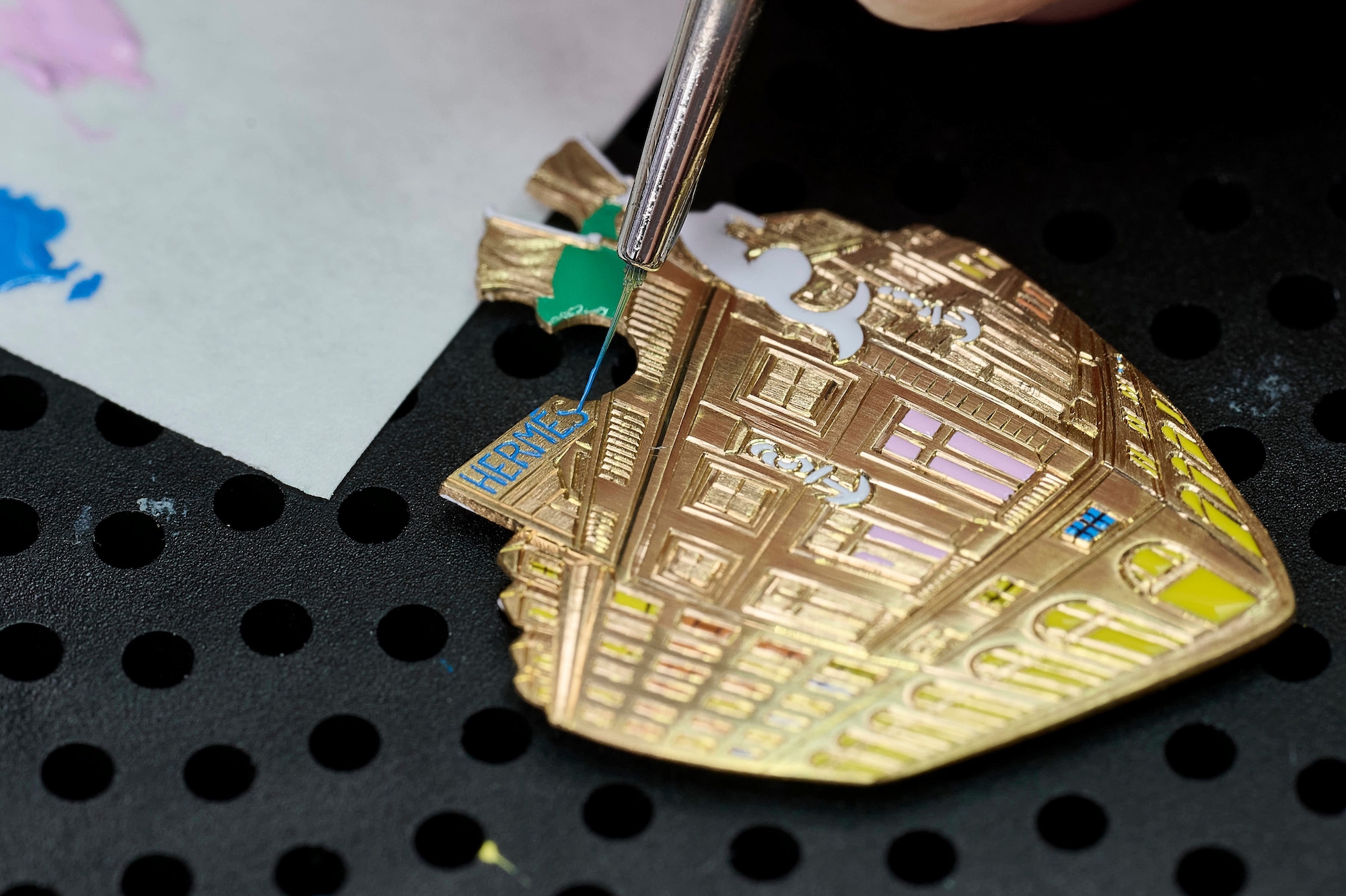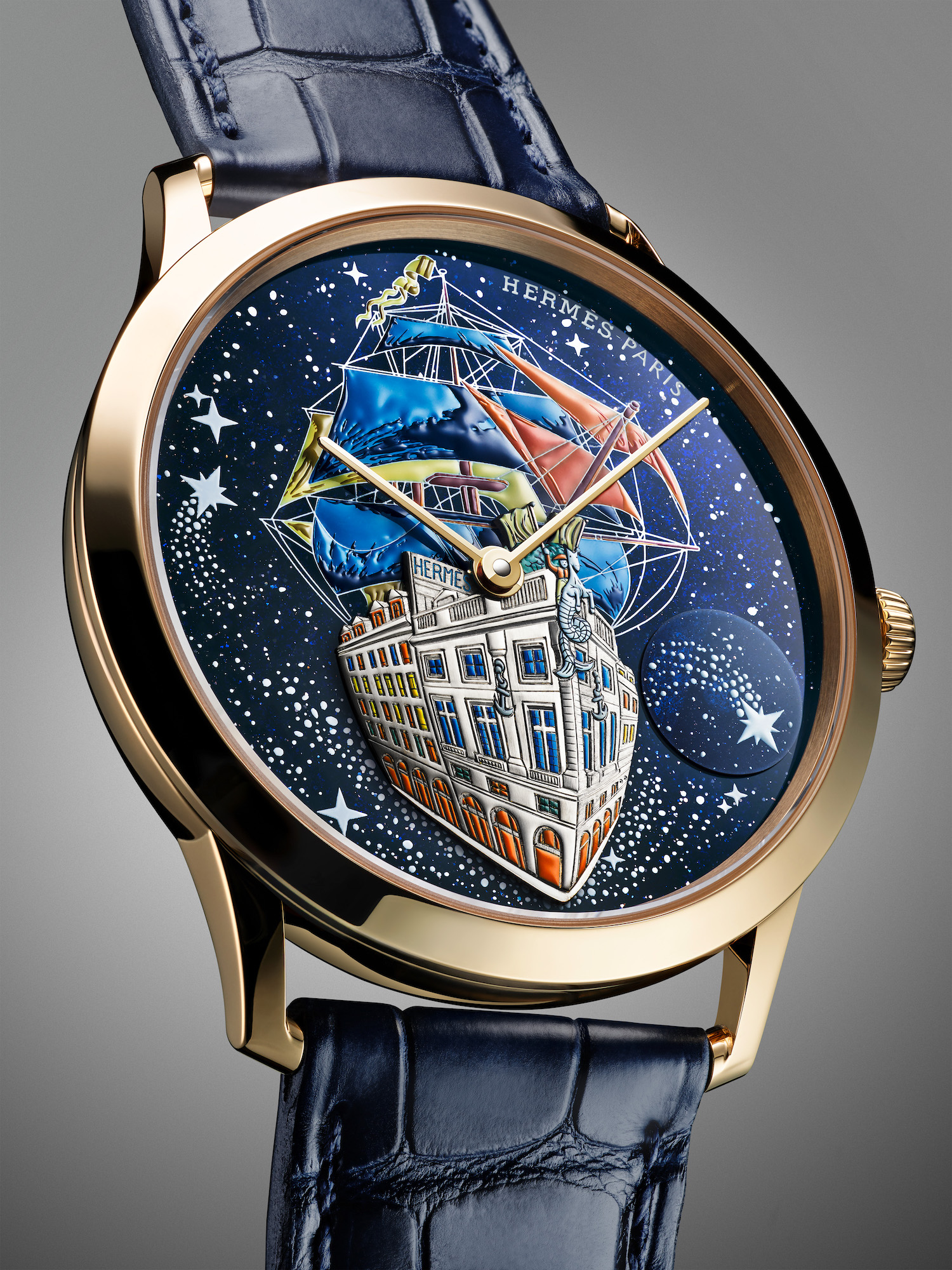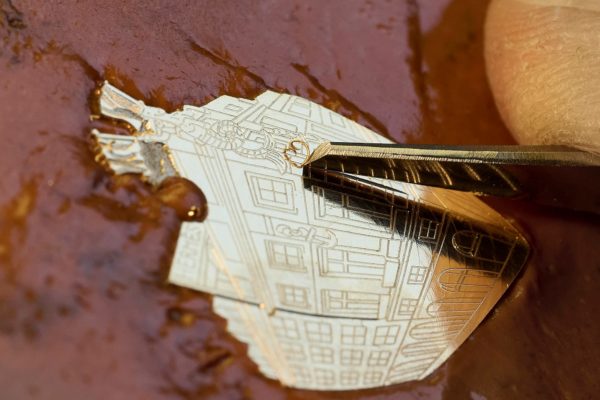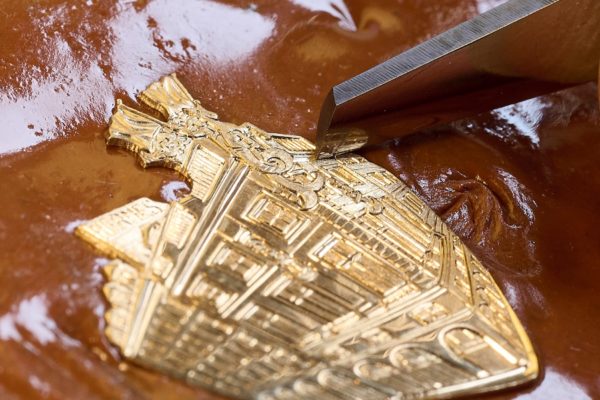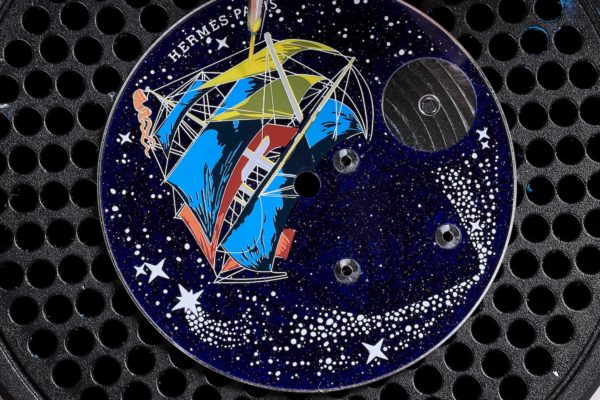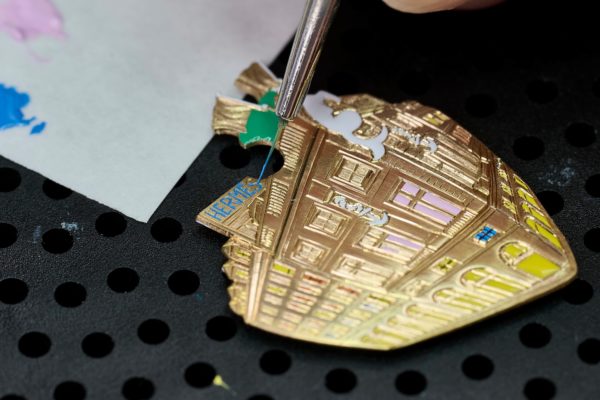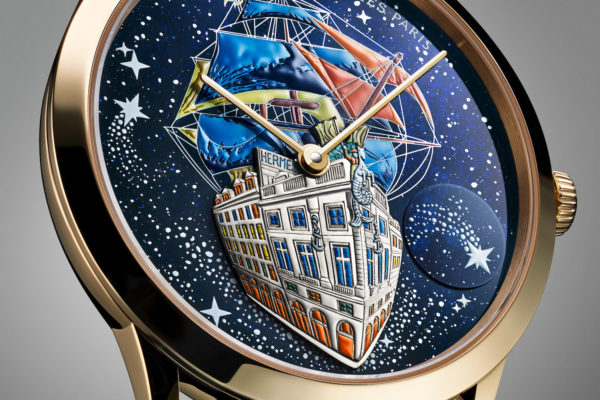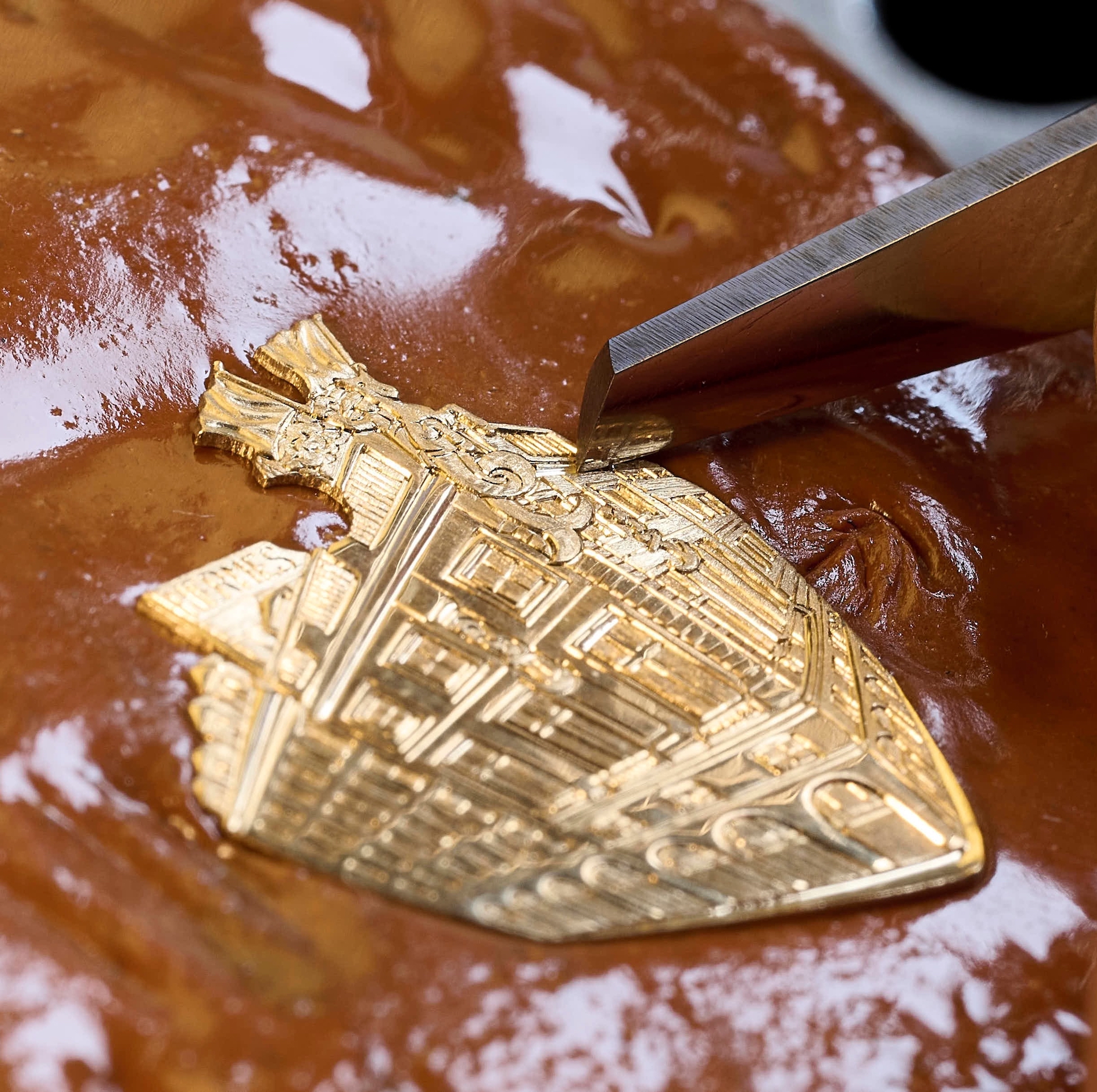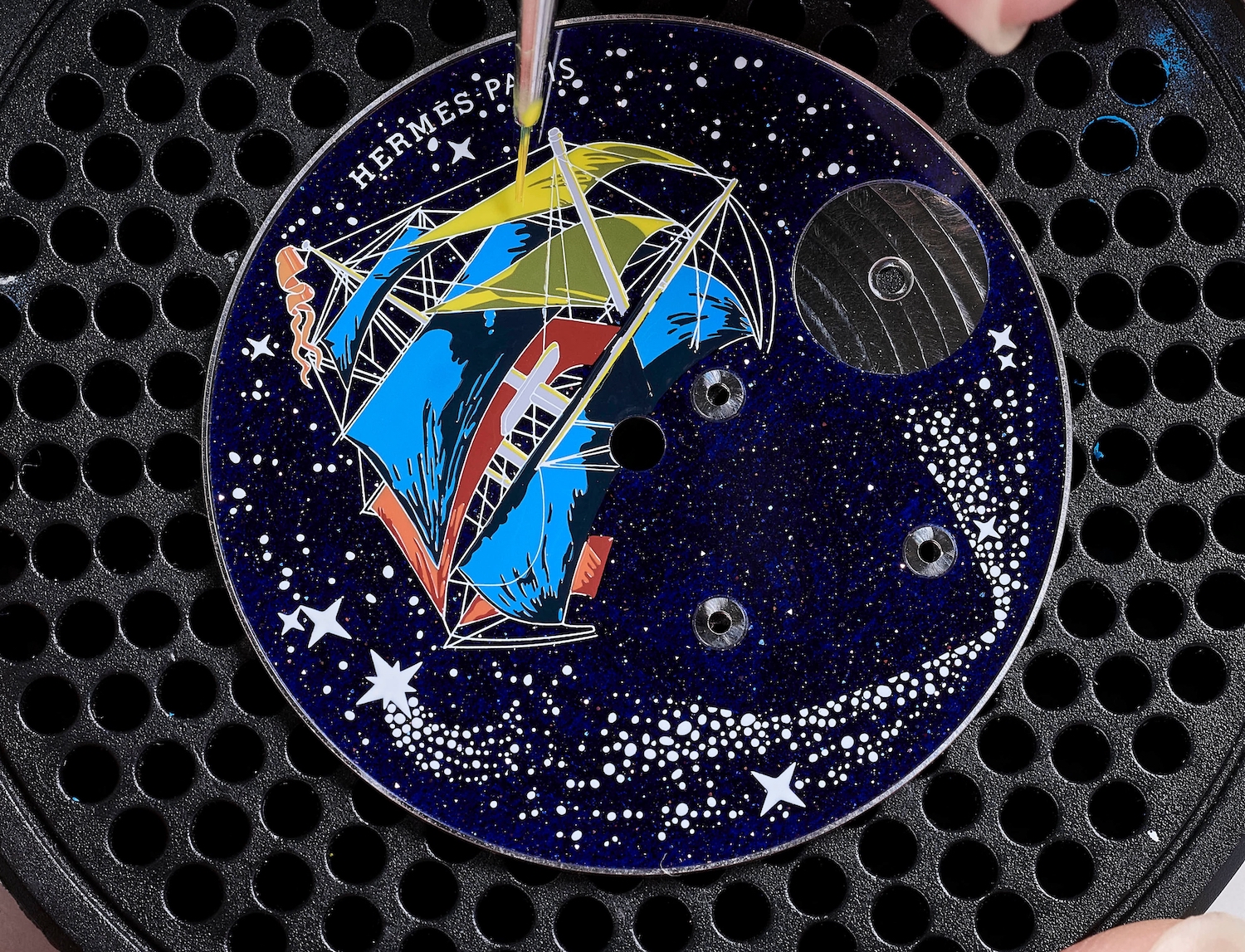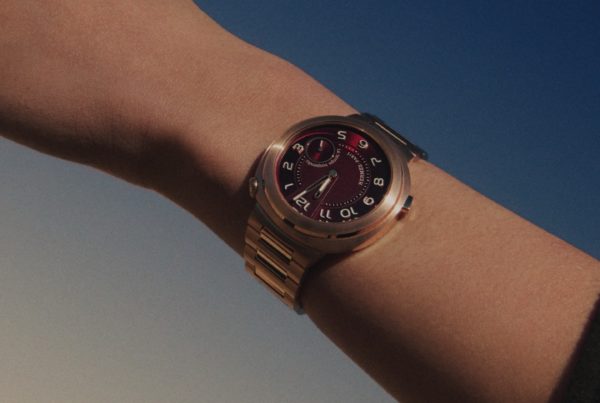The Slim d’Hermès Flagship: the essence of Hermès on a dial
This timepiece speaks louder than words about the House of Hermès. It is the result of a fusion between a phantasmagorical vision and various watchmaking crafts. The dial, worked in engraving and acrylic paint, reveals a dreamlike scene: the boutique at 24 Faubourg transformed into a ship that has cast off and set sail for the starry skies. Photographs: David Marchon. Text: Isabelle Cerboneschi
‘We are such stuff that dreams are made on…’*. This line from Shakespeare comes to mind when you look at the dial of the Slim d’Hermès Flagship. What appears can only have come from the spirit of a gentle dreamer. The flagship boutique at 24 Faubourg Saint Honoré, transformed into a ship, has taken flight and is cruising the starry skies under full sail. This timepiece, produced in 12 pieces, is inspired by a drawing signed by Dimitri Rybaltchenko for a silk scarf.
The body of the gold ship is engraved so delicately that it seems to appear in three dimensions on the dial. The sails have been rendered in acrylic paint, and the whole rests on a star-studded aventurine. The vessel is phantasmagorical, and the eye wanders to the smallest details. You could spend an indefinite amount of time observing this miniature work of art and let the hands wander around it without even paying attention.
But who is behind the creation of this miniature painting? Hermès turned to the Geneva-based Blandenier workshops, founded by master craftsman Christophe Blandenier, originally from Neuchâtel. He learned the trade of engraver and gem-setter at the École d’Art de la Chaux-de-Fonds, and after working for some of the big names in Geneva watchmaking, he decided to create the Blandenier workshops in 2007.
Hermès entrusts him with the production of complex pieces that require mastery of several art crafts: engraving, Grand Feu enamelling and acrylic painting. ‘Hermès presents us with a design inspired by a silk scarf and recomposed to fit a dial. Together, we choose the most appropriate techniques to obtain a result that respects the visual presented.‘ In the case of the Slim d’Hermès Flagship, the choice fell on two techniques: engraving and miniature acrylic painting. The challenge was to create the illusion of a third dimension, since the hull of the boat, which is engraved on a gold element, is not positioned on the same plane as the sails, which are painted directly onto the dial.
‘To ensure that the eye perceives consistent information, we made the appliqué that forms the hull thin enough so that the contrast with the sails is not too pronounced, and we applied fairly thick paint to the sails to give them a little volume,‘ explains Christophe Blandenier. ‘These are small changes that are necessary when you want to go from a flat design to an object in slight relief. We cheat to make the eye think it’s looking at an object with volume, when in fact it’s barely ten millimetres thick.‘
The illusion of a 3D pattern
In the engraving workshops, a craftswoman works on the vessel using binoculars. What makes this piece so challenging? ‘What’s very complicated is giving the illusion of a 3D pattern when it isn’t,’ she explains. Challenge met! When you look at the dial, you get the impression that the boat is in low relief, when in fact the surface is flat. It’s a magnificent trompe l’oeil.
‘To give the illusion of the depth of this flying building, we have to play with the structure of the lines in the pattern. We start with broad lines and work our way down. This gives the effect of perspective. To achieve this, we vary the width of the chisel. But the illusion of 3D also comes from polishing: that’s what it’s all about. We use different tools: ceramic pencils to mattify, burnishers to polish and cabrons for an intermediate finish. You have to master academic drawing and know the rules of perspective to give the illusion of volume,’ continues the engraver, who trained at an art school.
When you look at the finished piece, you get the feeling that the sails are inflated by the wind. This trompe-l’œil was created by a painter who works in the workshops. Her work is a meticulous play on light and shadow. It all starts with the aventurine dial, which is stamped with the outline of the boat and the shooting stars,’ she explains. Once everything is dry, I can add the paint to the sails. I start by painting the smallest parts. You can’t fill in two spaces that are touching, otherwise you run the risk of removing the contours. I then paint the larger parts using a thick brush, then choose an extremely fine one to stretch the paint towards the edges. I apply a first coat that serves as a base, then add the shadows. This is the most complicated part, the shadows. And to give the impression of a sail inflated by the wind, I add a layer of paint.’
A mischievous star at 4 o’clock
Each year, Hermès presents watches showcasing different crafts. Their dials are recognisable not only for their creative and colourful designs, but also for the presence of a slightly offbeat element, a touch of humour, or of fantasy. In the case of the Slim d’Hermès Flagship, a small dial at 4 o’clock adorned with a comet plays this role of troublemaker. The star rotates randomly according to the movement of the wrist, playing no other role than to whirl and entertain the eye.
‘This comet is mounted on ball bearings so that it can move freely,’ explains Christophe Blandenier. ‘It’s a purely aesthetic element. We chose the smallest ball bearing we could find on the market and we had to add an unbalance to create a driving effect. The dial is small, so we had to be very precise in the manufacture and machining of this element. We had never done anything like this before.’
‘When a customer buys a piece featuring different crafts, they love to imagine that no one else has exactly the same watch. There are bound to be small visible differences between one piece and another. That’s the beauty of our craft: each piece is unique. That’s the very nature of craftsmanship.‘
The Tempest, Shakespeare, Act 4

